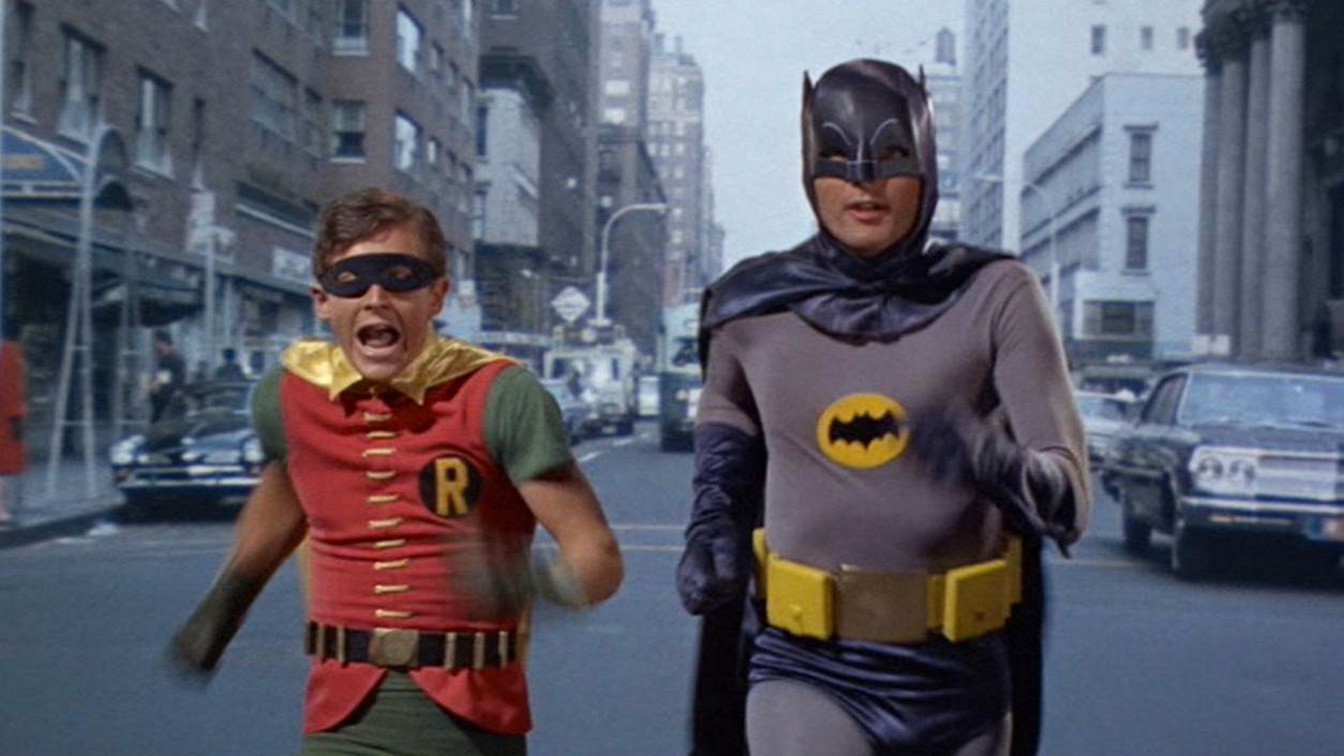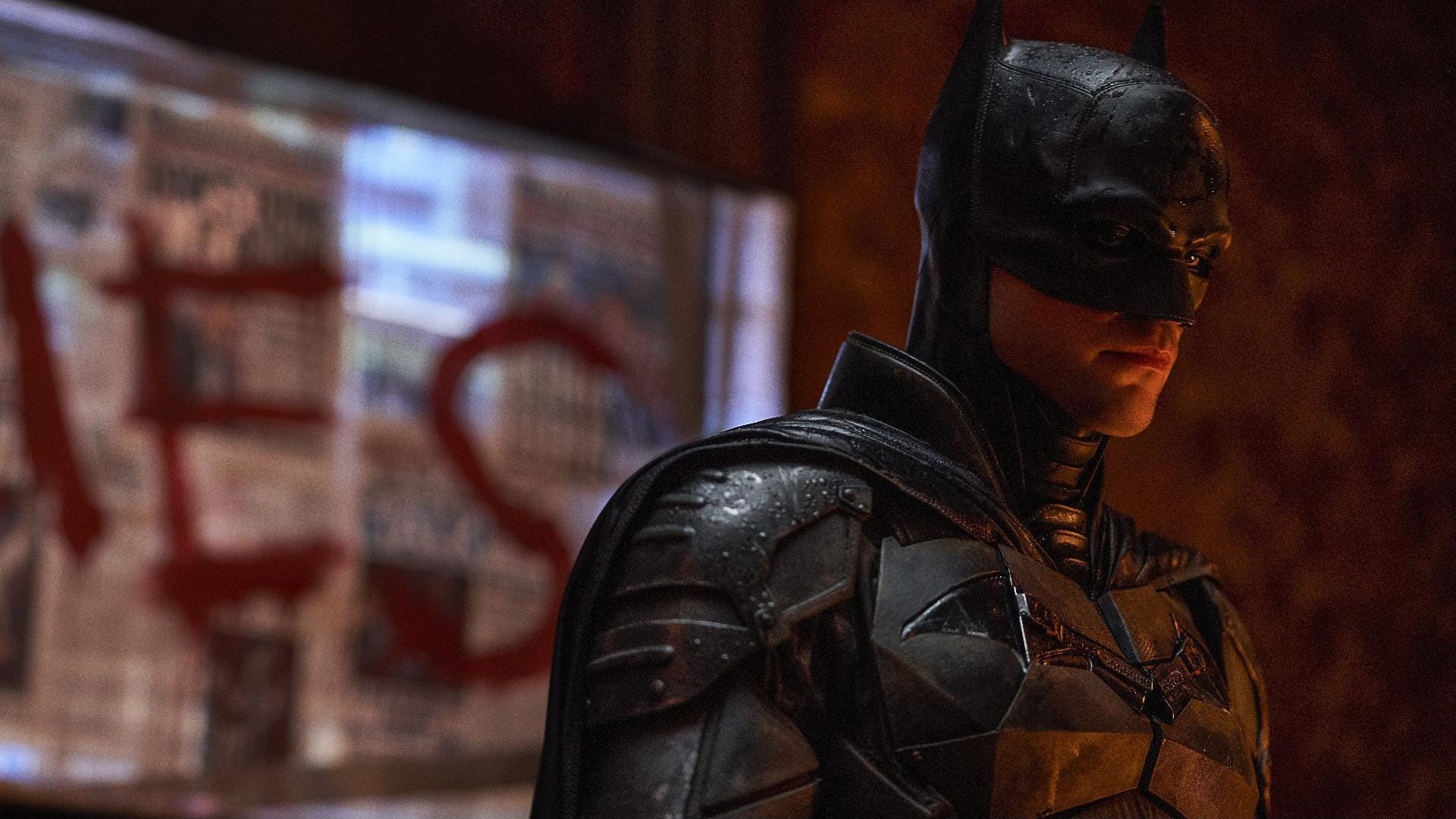The dark silhouettes and the mascara smudges to strike fear into the criminals of Gotham, The Batman has given us a city to match the vengeance and brooding ire that befits the caped crusader. Yet another rendition of The Batman has received critical acclaim from its cinematography, cast, set design and overall direction in depicting Batman. Amongst all other superhero films, it seems as if Batman receives a special privilege in the freedom which screenwriters have when writing superheroes. Even his arch-villain received an Oscar for his leading role in Joker. This privilege allows them some wiggle room in changing some parts of the hero’s backstory, powers and appearance, all of which are considered sacrosanct in the eyes of the fans. However, lately, fans have given that rule a pass when it comes to films about Batman where even the changes are canonised and celebrated.
A Campy Origin
In the 2022 The Batman, we are given a character who is roughly based on the frontman of Nirvana—Kurt Cobain. Where the band’s song, Something in the Way, is played throughout the film, which complements the grunge out-look of Bruce Wayne's budding career in crime-fighting. Yet when seeing the previous depiction of the superhero, this recent film is starkly different, specifically compared to the 1960s Batman TV series.
This version of Batman, starring Adam West, is campy and has a more upbeat style where the cape crusader is like a mascot for justice rather than an incarnate of vengeance. No mascara, no bullet-proof blast-proof flame-proof suit, but this Batman has spandex and wears his underwear outside. Instead of being "the shadows" 60s, Batman is more than comfortable fighting justice in the daytime. The 2022 Batman might enforce the law through broken bones and busted lips. Whereas the previous version prefers to educate its audience on the importance of wearing a seatbelt, eating vegetables and drinking milk. The TV series of that time period was intended for a younger audience, and it was common practice to create characters that try to include such public-service announcements. Another polarising aspect of this show was a comedy that included all of Batman's villains.
In the case of the 2022 film, this version of Batman hasn't fully allowed the help of others. Where in Patterson's Batman, he is still traumatised over the murder of his parents is shown as this angsty man who uses the suit as a means of coping. Adam West's Batman seems not to let the gruesome murder of his parents weigh him down with some bad vibes. There was even a stark difference in execution which actors studied and portrayed Batman’s greatest enemy: the Joker. Heath Ledger, Jared Leto, and Joaquin Phoenix have all famously had taken a more artistic and drastic approach in acting as the crown prince of crime. Ledger gives the audience a Joker that is bridged with insanity and the calculated schemes to match it. Leto, well…delivered a comically deranged Joker that didn't exactly step out of the shadow of Ledger's Joker. Phoenix has given a more humanising approach to Joker, which garnered him an Oscar for Best Actor. These actors have all taken steps in studying for their character like studying ventriloquist’s dummies, unleashing bizarre antics onto cast members or simply losing some weight for the role. For the 60s Batman TV series, Cesar Romero refused to shave off his moustache for the role of the Joker, where the costume department decided on just painting over his moustache, highlighting the lack of interest in the actor compared to the rest. However, out of all the adaptions the 60s Batman is still the most accurate early depiction of Batman's story.
Society Shaping the Cowl

Batman originally had used guns and excessive force in the earliest editions of the comic strip where he was first published, and DC Comic decided on reconning that stamping the moralistic rule: do not kill. Following the 60s to the 80s, 90s and 2000s, Batman had been right off the bat a hit becoming a Pop icon. Throughout those years the Batman developed, becoming darker yet also adapting to the changing social climate of the world.
Either be it the Keaton’s, Kilmer’s, Clooney’s, Bale's or Aflac's Batman, the tale remains the same—a child witnessing the death of his parents and swears to avenge them through crime-fighting. Keaton's and Kilmer's Batman had been filmed during the rise of consumerism and the Cold War. The 1980s was a period in which films like Wall Street depicted an age of the insatiable greed of money and the commercialisation of everything. Jack Nicholson’s Joker is seen to be flaunting around with the chemical products of his creation. This form of Batman reflected the rising support of US capitalism in response to Russia’s communism. The influences of culture and politics played a part in the design of the Joker, where Nicholson’s Joker is wearing a more flamboyant apparel.
At this point, the focus of telling children to eat their vegetables had transformed into tackling corrupt politicians and stopping evil schemes that would harm people. Yet the production studio's plan remained to cater to younger viewers in the hope of selling them merchandise. This is where Clooney's Batman failed to drive up the sale of his movie's merchandise. The fault? The infamous Bat-nipples.
Batman had a wide array of gadgets and tech that do have practical everyday use, then there were some that had used one very specific situation—like shark repellent. Although the issue of the costume design of Clooney's Batman became a running joke during its time and this reflects the growing concerns of parents of the harm of films and TV shows. During the rise of cable TV, this concern only worsened with every new television set popping up in households across the US.
To some concerned parents the display of nipples on the bat-suit would open some pandora’s box of bad influences onto their children. There is no doubt that children are suspectable to suggestions and emulating what they see on TV or films, and this topic also talks about the viewers being brainwashed from the content they watch. Jim Carrey's Riddler uses a mind-control box that is analogous to the issue of television leaving a deeper impact rather than being just for entertainment. Studios and directors had decided on changing more of the script to fit a broader audience that would not only sell more tickets but also sell merchandise. The Batman had at this point become another scheme in which film studios can be assured that this franchise is a cash cow for them to exploit. This consumerism-centric approach was what caused a decline of the franchise delivering the relevance it had in the 60s.

This, of course, changed with the release of the Dark Knight Trilogy. Batman Begin had not only changed the landscape for superhero films but the industry as a whole, giving the audience a film that delved deeper into an emotional aspect of the character. This film paved the way for the Marvel franchise as it taught viewers that superhero films could be dramatic while also delivering that action-filled story that is expected.
A Grim Crusader
This recently released Batman film hasn’t been tailored for a young audience but rather a matured one that can understand the manner in which the film takes to create a new interpretation of Batman. His costume is more like armour and practical in the sense of a crime fighter, and the demeanour is changed into less grudging and has a hint of uncertainty and naiveté. This Batman is living in the shadows but is the shadow itself, and the beginning scenes makes him like a spectre of the night. Unashamed of violence and adult themes, this film takes another step above previous films leaving a gothic vibe.
There are no more games for this Batman, yet this version of Batman is more reactive to the events around him. This Batman is inexperienced, and that can be seen with his entry into a fight being conspicuous, and his detective skills haven't yet sharpened to the almost super-human logic that reminiscence Sherlock Holmes. 'Struggle' is one word that best describes this Batman, struggling to find leads, holding his own in a fight and dealing with an identity crisis. The city of Gotham is shown like any other city suffering from rampant crime, a city filled with drug addicts, vices, rats and those dark alleyways that most people want to avoid.
The Riddler has been given the most drastic change. His motivation for riddles was to prove his intellectual prowess has instead turned into a demented opine on society's mistreatment towards him. This Riddler's motivation and action is a slight commentary on the current landscape of the internet, specifically on users who congregate with collective paranoid delusions. Besides this, the film showcases the racial inequality in economic security and the never-ending web of corruption and corroboration by those who are supposed to prevent such issues. The Batman tries to divert from an action-packed film rather than giving a more dramatic noir.
It is a film that allows viewers a chance to view a Batman before his staunch morals and before becoming 'the greatest detective in the world.' The Batman's cinematography couldn't be better because it depicts Batman's inner and external turmoil with sharp contrasts that allow his suit to blend into the shadows. This film immerses the audience into Gotham and can inflict the same chills that the criminals feel when wondering which corner Batman is watching. Batman acts as the traveller between night and day, guiding those who find themselves lost in the dark leading them into the light.
